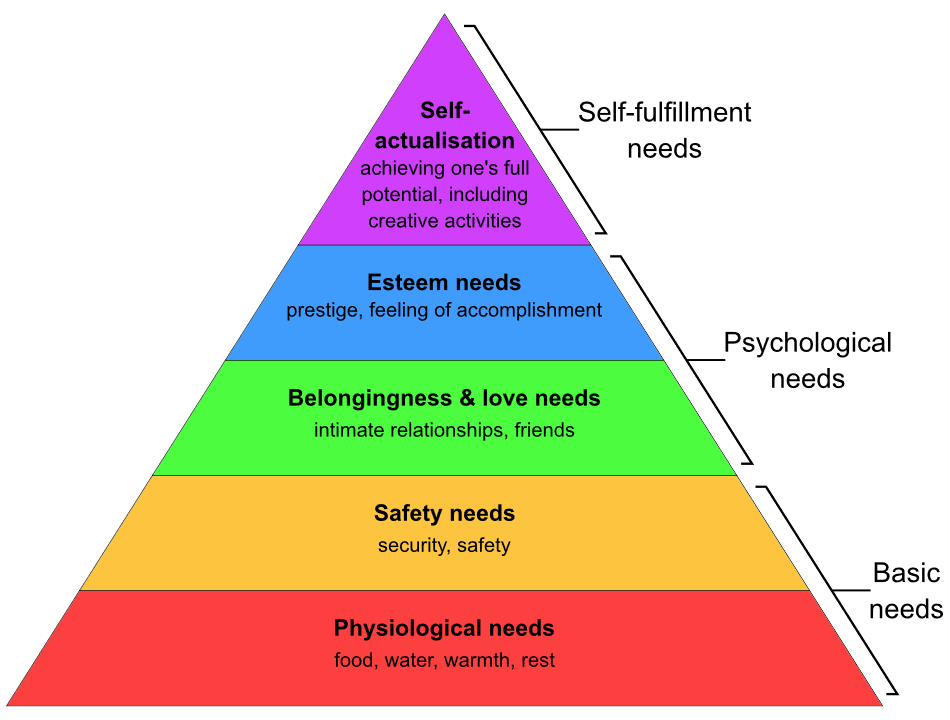Charting the Course: Marketing Foundations
What is Marketing?
The American Marketing Association (AMA) defines marketing as “the activity, set of institutions, and processes for creating, communicating, delivering, and exchanging offerings that have value for customers, clients, partners, and society at large.”[1]
Let’s unpack this definition…
Marketing is a set of activities related to creating, communicating, delivering, and exchanging offerings that have value for others.
Example
Eco-Friendly Boutique Hotel

To illustrate the process of creating, communicating, delivering, and exchanging offerings that have value for others, let’s consider a scenario involving a new eco-friendly boutique hotel:
Creating Value: The process of collaborating with suppliers and customers to create offerings that have value.
The boutique hotel collaborates with local artisans and eco-friendly suppliers to design and furnish the hotel with sustainable materials. They offer unique experiences such as guided nature walks, organic farm-to-table dining, and eco-friendly amenities like biodegradable toiletries and solar-powered energy systems. The hotel partners with a local organic farm to supply fresh produce for their restaurant, ensuring high-quality, sustainable food offerings that appeal to environmentally conscious travelers.
Communicating Value: Describing those offerings and their value to potential and current customers, as well as learning from customers what they want and like.
The hotel uses various communication channels to promote its eco-friendly initiatives and unique experiences. They create engaging content for their website and social media platforms, highlighting their sustainable practices and the benefits of staying at an eco-friendly hotel. They also encourage guests to share their experiences online and provide feedback. The hotel runs a social media campaign showcasing guest testimonials and behind-the-scenes looks at their sustainable practices, such as composting and water conservation efforts. They also use email marketing to send personalized offers and updates to past and potential guests.
Delivering Value: Getting those offerings to the consumer in a way that optimizes value.
The hotel ensures that every aspect of the guest experience aligns with their eco-friendly brand. From the booking process to check-out, they provide seamless and memorable experiences. They offer convenient online booking options, provide detailed information about their sustainable practices, and offer exceptional customer service. The hotel offers a complimentary shuttle service from the nearest train station, reducing the carbon footprint of guests’ travel. They also provide digital check-in and check-out options to minimize paper waste and enhance convenience.
Exchanging Value: Trading value for those offerings.
The hotel offers various pricing packages that reflect the value of their eco-friendly offerings. They provide options for guests to pay using traditional methods or through loyalty points and eco-friendly incentives. The hotel introduces a “Green Stay” program where guests receive discounts for participating in sustainable practices, such as reusing towels and reducing energy consumption. They also offer a loyalty program that rewards repeat guests with exclusive eco-friendly experiences and discounts.
This process is known as the marketing process:
Firms identify an unmet need/want/demand, then:
-
- Develop the right product to satisfy this need,
- Offer it at the right price,
- Offer it in the right place, and finally
- Promote it effectively
The marketing process is made up of four key elements known as “marketing mix” or the 4Ps of marketing — product, price, place, and promotion. The concept of the 4Ps as the core elements of the marketing mix was first formally introduced by E. Jerome McCarthy in his 1960 book Basic Marketing: A Managerial Approach[2]. While newer models have emerged, the 4Ps remain a widely used framework for introducing marketing concepts.
The 4Ps of marketing are:
- Product: The goods and/or services offered by the organization.
- Price: The amount customers pay for the product.
- Place: The distribution channels and logistics used to make the product available to customers.
- Promotion: The communication methods used to inform customers about the product.
Each of these elements must work together towards a common goal:
To create, communicate, deliver, and exchange offerings and value that foster mutually profitable relationships with satisfied customers.

We will examine each of the marketing mix elements more closely later in this book.
Core Marketing Concepts
Before proceeding further, let’s examine some core marketing concepts:
- Needs, wants, and demands
- Products
- Markets
- Value, satisfaction, and quality
- Utility
- Exchange, transactions, and relationships
Needs, Wants, and Demands
The concept of “needs, wants, and demands” as a core concept in marketing is most commonly attributed to Philip Kotler, a renowned marketing scholar.[3]
Needs
Extensive research has been conducted on human needs. Maslow’s hierarchy of needs theory identified a hierarchical structure of these needs[4]. At the base are the basic physiological needs, such as food, water, and shelter. Moving up the hierarchy, there are safety needs, followed by social needs for belonging, affection, fun, and relaxation. Above that are esteem needs for prestige, recognition, and fame. Finally, at the top are the self-actualization needs for knowledge and self-expression. This model provides a comprehensive framework for understanding the different levels of human needs and how they motivate individual behaviour and decision-making.

Examples
Maslow’s Hierarchy of Needs
Basic Needs:
- Physiological Needs:
- A person seeking shelter and food after a natural disaster.
- An individual working multiple jobs to afford necessities like food, water, and shelter.
- Safety Needs:
- A family installing a security system in their home to feel safer.
- An employee seeking a stable job with good benefits and a reliable income.
Psychological/Social Needs:
- Belonging and Love Needs:
- Someone joining a sports team or club to feel a sense of community and connection.
- A new employee trying to fit in and build relationships with coworkers.
- Esteem Needs:
- A student working hard to earn good grades and get recognition from their peers and teachers.
- An entrepreneur striving to build a successful business and gain prestige in their industry or community.
Self-Fulfillment/Self-Actualization Needs:
- An artist pursuing their passion for painting or sculpting to fulfill their creative potential.
- A person volunteering their time to help others, driven by a desire for self-fulfillment.
- These examples illustrate how people’s behaviours and choices are often driven by their underlying needs, as described by Maslow’s hierarchy. As individuals fulfill their lower-level needs, they are then motivated to pursue higher-level needs, ultimately striving for self-actualization.
Wants
Wants are how people communicate their needs. Wants are objects or actions that satisfy needs. Wants are desires for specific products or services that are influenced by various factors, including culture, personality, and societal factors.
Culture
Cultural norms, values, and traditions shape individuals’ desires and preferences.
For example, different cultures have distinct culinary traditions and preferences, leading to specific desires for certain foods, spices, and cooking methods. A person needs food but may want a pizza 😊
Personality
Personal interests, habits, and lifestyle choices can drive specific wants.
For example, an individual with an extroverted personality tends to be outgoing, sociable, and assertive. Their outgoing nature and desire for social interaction may lead to specific wants in entertainment, events, and experiences that allow them to engage with others. They may have a strong want for concert tickets, group activities, or parties. In contrast, an introverted person may prefer quieter and more solitary pursuits, such as books, art supplies, or subscriptions to online streaming platforms for personal enjoyment.
Societal Factors
Peer influence, media exposure, and social status can all impact one’s wants.
For example, in a society where there is a strong emphasis on fitness and health, individuals may develop a want for gym memberships, fitness equipment, or healthy food options. This want is driven by the societal pressure to maintain a fit and healthy lifestyle, as well as the desire to showcase one’s commitment to fitness on social media. The influence of societal factors, such as the importance placed on physical appearance and the perceived status associated with fitness, can drive the desire for specific products or services that cater to this want.

Demands
Demands are wants backed by the ability and willingness to purchase. When an individual has the purchasing power (income, savings, or credit) and the desire to acquire a particular product or service, it becomes a demand. For instance, many people may want a luxury vacation, but only those with sufficient purchasing power can turn that want into a demand.
Products
A product is anything that can be offered to a market that might satisfy a need, want, or demand. It encompasses not only physical goods but also services, experiences, events, persons, places, properties, organizations, information, and ideas[5].
Examples
Different Types of Products and Their Characteristics
Tangible Goods: Physical items that can be touched and owned. They range from consumer goods, like clothing and electronics, to industrial goods, like machinery and raw materials.
Examples: A smartphone, a car, or a piece of furniture.
Services: Intangible products that involve a deed, performance, or effort. They cannot be owned and are consumed at the point of delivery.
Examples: Hotel accommodation, airline travel, or a haircut.
Events: Specific, planned occurrences with defined start and end times.
Examples: Concerts, sports games, conferences or trade shows.
Experiences: Products that combine goods and services to create immersive and memorable journeys for customers. Events can become experiences if they create strong emotional connections with participants and engage with them on multiple sensory levels.
Examples: A theme park visit, an adventure nature excursion, or an interactive museum tour.
Persons: Individuals can be marketed as products, often in the context of celebrities, politicians, or influencers.
Examples: A celebrity or a politician running for office.
Places: Places can be marketed to attract tourists, residents, or businesses.
Examples: A city promoting itself as a tourist destination or a country attracting foreign investment.
Organizations: Organizations themselves can be marketed to build a positive image and attract support.
Examples: Non-profits seeking donations or universities attracting students.
Information: Information products include data, analysis, and insights that are valuable to consumers.
Examples: Market research reports or educational content.
Ideas: Concepts or causes that can be marketed to inspire or persuade.
Examples: Public health campaigns or environmental conservation initiatives.
The ParticipACTION program initially launched as a government program in 1971 and evolved into Canada’s leading physical activity communications and social marketing organization. This program exemplified how an idea — promoting physical activity — could be systematically marketed to influence public behaviour and perceptions, making it a successful example of an idea marketed as a product[6].
Markets
In the context of marketing, markets are SETS of actual or potential customers who might transact with a seller[7]. Markets consist of all potential customers sharing a particular need or want who might be willing and able to engage in an exchange to satisfy that need or want.
Examples
Markets
Markets for Ice Cream:
- Families With Children: Parents looking for treats to enjoy with their kids, especially during summer or special occasions
- Health-Conscious Consumers: Individuals seeking low-calorie, low-sugar, or dairy-free ice cream options, focusing on healthier choices
- Event Planners: Organizations or individuals planning parties, weddings, or corporate events that require catering services, including ice cream bars or dessert options
- Tourists and Travelers: Visitors to a city or region who want to try local ice cream shops or unique flavors as part of their experience
- College Students: Young adults looking for convenient and affordable snacks, often enjoying ice cream during late-night study sessions or social gatherings

Markets for Air Travel:
- Business Travelers: Professionals flying for meetings, conferences, or corporate events, seeking flexibility and convenience
- Leisure Travelers: Vacationers planning trips for leisure, family visits, or adventure, looking for affordable and convenient flight options
- International Students: Students traveling abroad for education, needing flights to and from their home country during holidays or breaks
- Tourists: Individuals or groups exploring new destinations, booking package deals that include flights and accommodations
- Cargo and Freight Companies: Businesses requiring air transport for goods, focusing on speed and reliability for shipping products globally

We will take a closer look at markets in Chapters 2 and 3 of this textbook.
Value, Satisfaction, and Quality[8]
Value is the customer’s perception of the product’s overall capacity to satisfy their needs against the costs of acquiring it.
Satisfaction is the extent to which a product’s perceived performance matches a buyer’s expectations. High quality products are those that consistently meet or exceed customer expectations. They are perceived to provide higher value and satisfaction to customers.
Perception is subjective and based on personal assessment. It is influenced by an individual’s personality, unique circumstances, past experience, etc.
Example
Value, Satisfaction, and Quality
Adventure Tour Company in the Canadian Rockies

| Element | Definition | Scenario: Adventure Tour Company in Canadian Rockies | Outcome |
|---|---|---|---|
| Value | The customer’s perception of a product’s overall capacity to satisfy their needs against the costs of acquiring it. This perception is subjective and influenced by individual factors such as personality, past experiences, and unique circumstances. |
|
Customers who prioritize safety and have a passion for outdoor activities will see more value in these tours. |
| Satisfaction | The extent to which a product’s perceived performance matches a buyer’s expectations. It reflects the level of pleasure or contentment experienced by the customer. |
|
Satisfied customers are more likely to book additional tours and share positive reviews, contributing to the company’s growth. |
| Quality | High-quality products or services consistently meet or exceed customer expectations. They are perceived to provide higher value and satisfaction to customers. |
|
The company’s reputation for quality leads to higher customer loyalty and positive word-of-mouth referrals. |
Customers often have varying perceptions of value, satisfaction, and quality for the same product due to several factors. These perceptions are subjective and influenced by individual circumstances, past experiences, and personal preferences.
Examples
Why Two Different Customers Might Perceive the Same Product Differently
Individual Expectations and Needs: Customers have unique expectations and needs based on their personal circumstances and experiences. A product that meets one customer’s needs may not satisfy another’s due to differing expectations.
Example: A business traveler might prioritize reliable Wi-Fi and a quiet environment in a hotel, while a leisure traveler might value amenities like a spa or pool more highly.
Past Experiences: Previous experiences with similar products or brands can heavily influence a customer’s perception of quality. Positive past experiences can lead to higher perceived quality, while negative experiences can diminish it.
Example: A customer who has had a positive experience with a brand’s product in the past is likely to perceive new products from the same brand as high quality.
Cultural and Social Influences: Cultural background and social influences, such as recommendations from friends or family, can shape how customers perceive quality.
Example: In some cultures, brand reputation and prestige might be more significant factors in perceived quality, while in others, functionality and price might be prioritized.
Price Perception: The price of a product can influence perceived quality, with some customers associating higher prices with higher quality. However, this perception can vary based on individual beliefs and experiences.
Example: A customer might perceive a high-priced luxury car as superior in quality due to its cost, while another might see it as overpriced if it does not meet their specific needs or expectations.
Example
Two Scenarios of Booking a Vacation
Background: Two customers, Sarah and John, are planning to book a vacation to a tropical resort, “Sunny Beach Resort.” The resort offers various amenities, including a swimming pool, spa, restaurants, and organized activities.

| Element | Sarah | John |
|---|---|---|
| Customer profile |
|
|
| Perception of value, satisfaction, and quality | Value: Sarah perceives the Sunny Beach Resort as offering moderate value. While it has nice amenities, she feels that the level of luxury and exclusivity does not match what she has experienced at higher-end resorts.
Satisfaction: Sarah is somewhat dissatisfied. The resort’s offerings do not fully meet her expectations for luxury and unique experiences, which she prioritizes. Quality: Sarah perceives the quality as average. While the resort is nice, she finds the service and amenities lacking compared to the five-star resorts she is used to. |
Value: John perceives the Sunny Beach Resort as offering excellent value. Compared to his previous vacations, the resort provides many amenities and activities at a reasonable price.
Satisfaction: John is highly satisfied. The resort’s family-friendly atmosphere, comfortable accommodations, and variety of activities exceed his expectations. Quality: John perceives the quality as high. The resort meets his needs for comfort and convenience, and he appreciates the range of activities available for his family. |
This scenario illustrates how the same vacation can be perceived differently by two customers based on their individual expectations, needs, and prior experiences. Sarah’s preference for luxury and high-end experiences leads her to a different perception of value, satisfaction, and quality compared to John, who prioritizes budget-friendly options and family-friendly amenities.
Utility
Utility refers to the value or benefit a customer receives from consuming a product or service. It is the satisfaction or pleasure derived from the product. In the marketing context, there are four types of utility:
- Form Utility: The product’s design.
- Place Utility: Availability of the product where the customer needs it.
- Time Utility: Availability of the product when the customer needs it.
- Possession Utility: Ease of acquiring the product[9].
Examples
Utility Types
| Utility Type |
Definition | Examples |
|---|---|---|
| Form Utility | The value derived from the physical design or features of a product. | A luxury hotel suite that offers a beautifully designed space with high-end furnishings, modern amenities, and a stunning view creates form utility. The thoughtful design and attention to detail enhance the guest’s experience and satisfaction.
A chef creating a gourmet dish by combining quality ingredients into a delicious and visually appealing meal. |
| Place Utility | The availability of a product or service at a location convenient for the customer. It ensures that the product is accessible where the customer needs it. | A travel agency with branches in major airports provides place utility by offering last-minute travel bookings and assistance to travelers on the go. This convenience increases the value of the service for customers who need immediate travel solutions.
A vending machine strategically placed in a busy train station, offering snacks and drinks to travelers who need quick refreshments. |
| Time Utility | The value created by having a product or service available when the customer needs it. It focuses on timely delivery and availability. | An online booking platform that allows customers to reserve hotel rooms 24/7 provides time utility. The ability to book accommodations at any time, day or night, enhances convenience and satisfaction for travelers.
A 24-hour convenience store that meets the needs of customers who require goods outside of regular business hours. |
| Possession Utility | The ease with which a customer can acquire and use a product or service. It involves simplifying the purchasing process and enhancing the customer’s ability to own the product. | A car rental company that offers online reservations, flexible payment options, and quick pick-up and drop-off services provides possession utility. These features make it easy for customers to rent and use a vehicle during their travels.
A library that offers digital borrowing options, allowing patrons to easily access and read e-books from the comfort of their homes. |
Exchange, Transactions, and Relationships[10]
Exchange is the act of obtaining a desired object from someone by offering something in return.
Transactions are the basic units of exchange, involving at least two things of value, agreed-upon conditions, a time of agreement, and a place of agreement.
Relationships are built through repeated exchanges and transactions, aiming to create strong, enduring connections with customers to encourage loyalty and repeat business.
Examples
Exchange, Transactions, and Relationships
| Element | Definition | Examples |
|---|---|---|
| Exchange | The act of obtaining a desired object from someone by offering something in return. It is the core concept of marketing, where both parties aim to gain value from the interaction. | A hotel guest exchanges money for a night’s stay. The guest receives accommodation and services, while the hotel receives payment, creating value for both parties. |
| Transactions | The basic units of exchange, involving at least two things of value, agreed-upon conditions, a time of agreement, and a place of agreement. They are specific instances where exchanges occur. | A transaction occurs when a tourist books a guided city tour online. The tourist pays the tour company (money) in exchange for a scheduled tour (service) on a specified date and time. |
| Relationships | Relationships are built through repeated exchanges and transactions, aiming to create strong, enduring connections with customers to encourage loyalty and repeat business. Relationship marketing focuses on building these long-term relationships with profitable customers. | A frequent flyer program offered by an airline is designed to build relationships with travelers. By providing rewards and personalized offers, the airline encourages repeat business and fosters customer loyalty. |
These core marketing concepts form the foundation of marketing theory and practice, guiding organizations in identifying, creating, and delivering value to their customers.
Media Attributions
- Figure 1: “Hotel by River in Summer” by Adrien Olichon (2023), via Pexels, is used under the Pexels license.
- Figure 2: “Smiling black man eating burger and taking selfie” by Kampus Production (2020), via Pexels, is used under the Pexels license.
- Figure 3: “Maslow’s Hierarchy of Needs” by AndroidMarsExpress (2020), via Wikimedia Commons under a CC BY-SA 4.0 license.
- Figure 4: “Women Performing Yoga on Green Grass Near Trees” by Rui Dias (2018), via Pexels, is used under the Pexels license.
- Figure 5: “Two Ice Cream Cups” by Teejay (2018), via Pexels, is used under the Pexels license.
- Figure 6: “Airplane Wing Above Clouds” by Sheila Condi (2017), via Pexels, is used under the Pexels license.
- Figure 7: “Man Standing on Top of Mountain” by Jaime Reimer (2019), via Pexels, is used under the Pexels license.
- Figure 8: “An Island with Cottages and Beach Chairs.” by Vincent Gerbouin (2018), via Pexels, is used under the Pexels license.
- American Marketing Association. (n.d.). Definitions of marketing. Retrieved October 23, 2024, from https://www.ama.org/the-definition-of-marketing-what-is-marketing/ ↵
- McCarthy, E. J. (1960). Basic marketing: A managerial approach. Richard D. Irwin. ↵
- Kotler, P. (2011). Philip Kotler's contributions to marketing theory and practice. In Malhotra, N. K. (Ed.), Review of marketing research: Special issue – Marketing legends (pp. 87–120). Emerald Group Publishing Limited. https://doi.org/10.1108/S1548-6435(2011)0000008007 ↵
- Maslow, A. H. (1943). A theory of human motivation. Psychological Review, 50(4), 370–396. https://doi.org/10.1037/h0054346 ↵
- Kotler, P., & Keller, K. L. (2021). Framework for marketing management (6th ed.). Pearson. ↵
- ParticipACTION. (n.d.). About us. Retrieved October 23, 2024, from https://www.participaction.com/about/ ↵
- Kotler, P., & Keller, K. L. (2021). Framework for marketing management (6th ed.). Pearson. ↵
- Zeithaml, V. A. (1988). Consumer perceptions of price, quality, and value: A means-end model and synthesis of evidence. Journal of Marketing, 52(3), 2–22. https://doi.org/10.1177/002224298805200302 ↵
- Maverick, J. B. (n.d.). What are the 4 types of economic utility? Investopedia. https://www.investopedia.com/ask/answers/032615/what-are-four-types-economic-utility.asp ↵
- Dwyer, F. R., Schurr, P. H., & Oh, S. (1987). Developing buyer-seller relationships. Journal of Marketing, 51(2), 11–27. https://doi.org/10.1177/002224298705100202 ↵
The professional association that provides the widely accepted definition of marketing.
The activity, set of institutions, and processes for creating, communicating, delivering, and exchanging offerings that have value for customers, clients, partners, and society at large.
The four key elements of marketing strategy, also known as the 4Ps: Product, Price, Place, and Promotion.
Basic human requirements such as food, water, shelter, and safety.
Desires for specific products or services that satisfy needs, influenced by culture, personality, and societal factors.
Wants that are backed by the ability and willingness to purchase.
Anything that can be offered to a market that might satisfy a need, want, or demand, including physical goods, services, experiences, and ideas.
Sets of actual or potential customers who might transact with a seller.
The customer's perception of a product's overall capacity to satisfy their needs against the costs of acquiring it.
The extent to which a product's perceived performance matches a buyer's expectations.
The value or benefit a customer receives from consuming a product or service, including form, place, time, and possession utility.
The act of obtaining a desired object from someone by offering something in return.
The basic units of exchange, involving at least two things of value, agreed-upon conditions, a time of agreement, and a place of agreement.
Strong, enduring connections with customers built through repeated exchanges and transactions.

